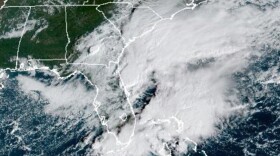-
Some Eastgate Crossing business owners were able to reopen their storefronts this month. While they celebrate being able to reopen, they also wonder how they would handle future severe flooding events like Chantal.
-
A storm without a name and unusual king tides were causing some flooding on the Carolina coast as tropical storms churned in the Atlantic and along Mexico’s Pacific coast. About a dozen streets were already flooded in Charleston, South Carolina, where a high tide of 8.5 feet was forecast Friday morning.
-
For nearly two months, dozens of Chapel Hill residents whose homes were destroyed in the flooding caused by Tropical Storm Chantal have been staying in hotels while trying to find new homes or waiting for repairs to be finished at their damaged homes.
-
Warren Wilson College shut down for weeks after Helene flooded campus. The schools still has millions of dollars of repairs remaining.
-
Two people were found dead in central North Carolina after rushing floodwaters pulled them from their submerged car. Another cluster of storms was dumping rain on the region Thursday, the day after the two bodies were found.
-
The Trump Administration ended the BRIC program even as the nation is experiencing increasingly frequent and wetter storms. The state says $200 million in grants were affected in North Carolina.
-
The remnants of Tropical Storm Chantal caused flooding across Central North Carolina, causing rivers like the Eno and Haw to reach record flood levels.
-
Carrboro's damage estimates from Chantal have reached about $19 million, a significant chunk in the climbing cost of the storm in Orange County.
-
New research funded by the UNC Collaboratory revealed that 90,000 buildings have experienced flooding over 24 years, some repetitively.
-
While survivors repair their homes and businesses, this week’s deadly flooding from Chantal raises larger questions about how North Carolina communities get ready for the next major storm.
Play Live Radio
Next Up:
0:00
0:00
Available On Air Stations










